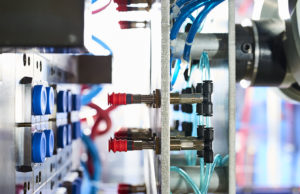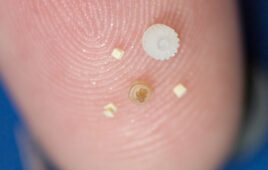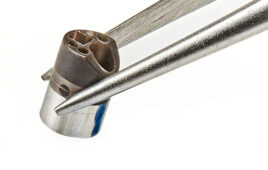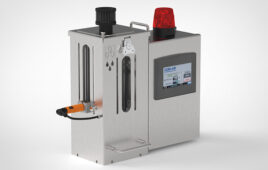The properties of certain polymers make them good choices for a variety of medical devices.
Raj Singh, BMP Medical

Injection molding manufacturing equipment (Image from BMP Medical)
Selecting the correct medical-grade plastic for a medical device or component is a critical decision in manufacturing the perfect part.
Polymers have long been considered to have a significant advantage over metals for medical applications. That’s because the isotonic saline solution that comprises the body’s extracellular fluid is extremely hostile to metals but is not normally associated with the degradation of many synthetic high-molecular-weight polymers.
Polymers are typically classified into three groups.
- Thermoplastics — linear or branched polymers that can be melted and molded using conventional techniques. If reheated, wax can be molded into a different shape.
- Thermosets — cross-linked polymers that are normally rigid and intractable. They consist of a 3D molecular network and cannot be re-melted. They degrade rather than melt upon heating.
- Elastomers — rubbers that can be stretched to extension and will spring back when the stress is released.
By weight, thermoplastics represent 90% of all plastic used worldwide. Unlike most thermoset plastics, thermoplastics may be processed without any serious losses of properties. Here are some of the most common thermoplastics used in medical device injection molding:
Polyethylene
Also called polythene, polyethylene can be formulated in high or low densities. It is cost-effective, impact- and corrosion-resistant, absorbs little water and retains its overall performance and structural integrity after frequent sterilization cycles. A porous synthetic polymer, polyethylene is biologically inert, does not degrade in the body and is often used in medical implants.
Polypropylene
Polypropylene is a white, mechanically rugged material with a high chemical resistance. It is resistant to stress, cracking, impact and fatigue and has a high melting point. Polypropylene is commonly used to manufacture disposable syringes, membranes for membrane oxygenators, connectors, finger-joint prostheses, non-absorbable sutures, reusable plastic containers, pharmacy prescription bottles and clear bags.
Polymethyl methacrylate
Polymethyl methacrylate (PMMA) is a synthetic resin that offers transparency, toughness, rigidity and an almost perfect transmission of visible light. An ideal substitute for glass, it can keep a beam of light reflected within its surfaces and is frequently made into optical fibers for telecommunication and endoscopy.
Polyvinyl chloride
Polyvinyl chloride (PVC) is produced in two general forms, as a rigid or unplasticized polymer (RPVC), and as a flexible plastic. Flexible PVC is commonly used in areas where a sterile environment is a priority, and in some cases as a replacement for rubber. PVC is dense, inexpensive and readily available. Rigid PVC is very hard and has extremely good tensile strength. PVC is commonly used to manufacture disposable devices for hemodialysis or hemoperfusion, as well as tubing, cardiac catheters, blood bags and artificial limb materials.
Polyamide
Polyamide, or nylon, is a synthetic thermoplastic polymer that is often used as a substitute for weaker metals because of its strength, inflexible nature, temperature resilience and chemical compatibility. Polyamide is good for CNC machining, injection molding and 3D printing. It can be conditioned or combined with other materials to improve its overall strength and is a good option for parts that see a lot of wear and tear. It resists most chemicals but can be tricky to mold and is expensive.
Acrylonitrile butadiene styrene (ABS)
ABS is commonly used in part production and 3D-print manufacturing for OEMs. Its impact- and heat resistance and rigidity make it a good engineering plastic or substitute for metals in structural parts. It can be injection-molded, blow-molded, or extruded, melted and reshaped, and sterilized by gamma radiation or ethylene oxide (EtO). Common uses are non-absorbable sutures, tendon prostheses, drug-delivery systems and tracheal tubes.
Polycarbonate
Polycarbonate is naturally transparent and offers good UV protection. It is a good alternative to glass, relatively shatterproof, and medical grades can be sterilized using steam at 120 °C, gamma radiation or (EtO). Polycarbonate is lightweight, offers chemical-, electrical-, heat- and impact-resistance, stability and high performance.
Raj Singh is technical manager for BMP Medical.
The opinions expressed in this blog post are the author’s only and do not necessarily reflect those of Medical Design and Outsourcing or its employees.



